
How To Build A Customer Engagement Strategy For Your Loyalty Program
Table of Contents






What Is Customer Engagement?
Customer engagement is how a brand interacts with customers with the end goal of building and maintaining a relationship. Engagement is a key contributor to better customer retention because engaged customers are actively choosing to interact with a brand rather than just being passive shoppers.
Prioritizing engagement is one thing that helps brands become more customer-centric. Brands that prioritize engagement are more proactive in identifying different interaction opportunities across customer journeys and ensuring each customer interaction is a positive one.
This leads to happier customers who are more likely to make repeat purchases and stay loyal over time.
The Link Between Customer Engagement and Loyalty Programs
Loyalty programs are one of the key strategies companies use to increase customer engagement because they go hand-in-hand.
Customer engagement strategies focus on creating quality brand-to-customer interactions and activities, while loyalty programs work to build brand-to-customer relationships by offering value, providing relevant content, and rewarding loyal behaviors and actions.
Why Your Loyalty Program Needs A Customer Engagement Strategy
Creating an engagement plan for a loyalty program is crucial to ensuring your program is acquiring, engaging, and retaining members across the entire relationship lifecycle. Engagement strategies are how you can increase the chance that customers stay involved and motivated.
One example is utilizing gamification, where customers earn rewards or points for participating in activities related to your product or service. Another approach is to personalize the customer experience by offering tailored recommendations based on their product preferences and past interactions.
By taking time to develop a customer engagement plan for their loyalty programs, companies can excel even further in improving customer retention, providing enriching customer experiences, and driving higher customer lifetime value.
Key Elements of A Successful Engagement Strategy
Research
You don’t want to start this process blind and uninformed. In order to build an engagement strategy, you need to understand from the customer’s perspective why they would choose to engage with you: what motivates them, what are their wants and needs, what are their buying intentions, etc. Leveraging customer data allows you to anticipate their desires and proactively address them, making customers feel valued and understood.
Communication
Communication is what maximizes engagement in a loyalty program. Different types of loyalty program communications are what guide a customer from a new member to a full-fledged advocate. A poor communication strategy is one of the top reasons loyalty programs fail.
Personalization
Personalization isn’t just a buzzword, it’s a necessity. Personalization is also crucial for building customer loyalty. Your engagement strategy should incorporate personalized touches and interactions. This could be achieved through personalized emails, product recommendations based on past purchases, or exclusive offers that cater to their unique interests and behaviors.
Qualitative & Quantitative Data Analysis
Metrics are a brand’s best friend. For loyalty program engagement strategy you’ll need to ensure you’re set up to not only track crucial metrics and KPIs but are also in a position to understand the ‘whys’ behind the numbers you’re seeing. If your redemption numbers are low you need to have feedback channels in place to determine if it’s a technical issue or if members don’t like your rewards.
How To Start Building An Engagement Strategy For Your Loyalty Program
1. Define Your Goals and Objectives
Whenever you start building out an engagement strategy for your loyalty program, the first place to start is with your goals. Not just vague ideas of “build loyalty” but firmer, more detailed goals that you can use to start brainstorming the elements of your future engagement strategy.
While your overall goal is to increase customer engagement, you can increase your effectiveness and narrow your strategy by knowing what kinds of engagement to prioritize. For example, if you know that collecting consumer feedback is a high priority, then you can focus parts of your engagement strategy on increasing the rate of reviews, encouraging customers to complete surveys or questionnaires, and so on.
Below are a few examples of potential program goals and strategies to achieve them:
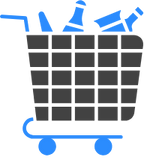
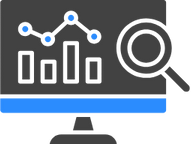
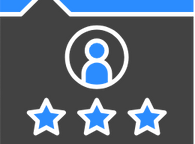
2. Determine the Key Messages & Value Proposition for Your Audiences
When planning your loyalty program’s engagement strategy, it's crucial to identify your primary audiences.
Depending on your brand, industry, or program type, you may have diverse user segments or audiences engaging with your program. Each audience segment possesses distinct preferences, needs, and expectations.
It's essential to acknowledge these audiences and assess whether there are variations in how you present the program's value proposition or key messages.
Investing time in understanding the unique traits of your different audiences and tailoring your messages to align with each group can enhance the effectiveness of your communication strategy. By addressing each group's specific interests and concerns, you can develop a more compelling and relevant loyalty program that truly connects with your target participants.
3. Map Out Customer Journeys For Your Loyalty Program
Customer journeys are key for building more personalized and engaging experiences, and the same is true for your loyalty program. From initial signup to the first point earned to redeem for rewards, you should map out a complete view of the way your members will interact and use your program.
Mapping out your customer journey will be beneficial in the future as you start to implement, test, and refine your customer engagement tactics. Knowing the different touchpoints and moments where your customer engages and interacts with the program will assist you in solving issues, strengthening weak points, or finding opportunities to grow and expand.
You Can Use Customer Journey Maps To...
As we mentioned earlier, every good loyalty program has a communications plan.
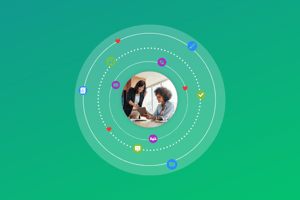
This will include transactional communication like order confirmations, redemption summaries, account updates, etc. This can also include communications for re-engaging lapsed members, sending members special offers or promotions, or celebratory communications like birthdays or anniversaries.
When you have a customer journey map you can start to identify where you can utilize communications to drive customer engagement:
- Creating an onboarding series for new enrollees covering how to earn, how to redeem, special offers for signing up, etc.
- Sending reminder emails when a member hasn’t made a purchase or uploaded a receipt in 30 days
- Notifying a member when they are close to reaching a new reward or tier level
As you build out your customer journey maps, you'll start to identify where data will be transmitted to and from the loyalty program via tech integrations.
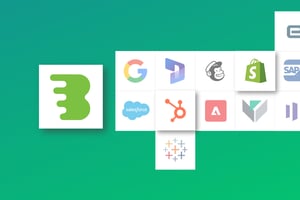
This data can include sources such as company CRM, ERP, POS sales data, marketing software, and more.
Understanding what data will be needed for your loyalty program and where it'll be sourced is crucial for optimizing program performance and ensuring data security. By mapping out the path of data transmission to and from your program, you can identify potential bottlenecks, vulnerabilities, and areas for improvement before the program is even launched.
This knowledge allows you to streamline processes, enhance data protection measures, and ultimately enhance the efficiency and reliability of your loyalty program.
4. Identify The High-Value Customer Behaviors You Want To Reward
Part of building out your loyalty program engagement strategy is identifying what kind of engagement you want to see from your customers, including any specific behaviors. These could be as simple as logging in to their member account once a week to posting a product review for every purchase.
Think about the goals you established earlier: what types of customer behaviors or actions would help you achieve those goals?
You want to reward engagement and behaviors to provide customers with value and keep them happy (such as getting points for purchases). However, you should also consider how their actions will benefit your brand as well. A CPG brand for example might want customers to submit photos of their receipts to get more background data on what types of products the customer buys, and in what quantities.
Avoid Prioritizing Actions or Behaviors That Have Little To No Benefit
Some companies make the mistake of rewarding the same list of consumer actions with the same point values, with no real plan or strategy behind the decision. This not only makes it harder to stand out from competitors, but it also causes you to miss out on key opportunities to drive real engagement with your customers and to get beneficial data.
For example, most companies offer some kind of reward or incentive for customer referrals. But what about rewarding members for submitting ideas for new products or services, or completing feedback questionnaires? Encouraging these behaviors can be extremely beneficial:
- Providing your brand with useful feedback for products or process improvements
- Building communication with your customers
- Demonstrating that you listen and value your customers’ input.
Use Earning Rules or Incentives To Target Specific Behaviors
Not all actions or behaviors hold the same weight, especially in a loyalty and rewards program. An integrated loyalty platform with customizable earning rules allows you to truly target the specific behaviors you want to incentivize among your members.
You can create tailored rules for individual subsets of customers, or you can also create rules that offer more value for especially desired behaviors, such as:
- Adding a birthday date to receive a gift
- Connecting social media accounts to receive points for liking or sharing posts
- Consuming content like watching videos or playing games
5. Determine The Right Rewards For Your Program Members
Along with identifying your desired customer behaviors and actions, your engagement strategy will also factor in how you reward customers for those actions and behaviors. Points or other loyalty program currency is the typical amount, but you should also explore including additional personalized or unique rewards.
Different situations may call for different types of rewards. Instead of solely offering points, you can experiment with alternative rewards such as discount codes, complimentary products or samples, branded merchandise, or even tokens like profile badges as incentives.
Reward Actions That Benefit Both Your Business and Your Customers
When done strategically, rewarding certain member actions or behaviors can provide value to both your customers and your brand.
For example, members could receive bonus points when they complete different parts of their member profile - product preferences, services they’re interested in, setting communication preferences, creating wishlists, etc. The member gets bonus points while the brand gets first-party data that can be utilized for purposes like enhancing customer segmentation or creating more targeted bonus promotions and offers in the future.
This data might reveal insights like certain customers would buy 3 products if they were all on sale simultaneously, or that specific member-exclusive offers are redeemed more frequently than other types of offers.
Experiment With Different Rewards To Assess Their Effectiveness
You can enhance your engagement strategy by testing the effectiveness of different rewards to determine which resonates the most with your customers.
For instance, try testing various types of referral incentives to identify what appeals more to customers and referees, and if any incentives drive higher amounts of successful customer referrals. You could compare offering a $20 discount coupon versus a 20% discount code to see which resonates better with your audiences.
Start Building Out Your Engagement Strategy
Now it’s time to start defining the details of your engagement strategy.
Everything you’ve collected or determined before now are different pieces that factor into your plan: the overarching messages you want to communicate, the full customer experience and the different actions or behaviors that you want to drive, and the valuable rewards, incentives, or benefits you can use to help motivate customers to take those actions or communicate your messaging.
All of these will help you build out the different elements within your loyalty program that help drive engagement. A few examples of how this looks in action include:
- A promotional newsfeed that constantly displays new offers, promotions, or bonus opportunities for members based on their specific qualifications
- Data-acquisition campaigns that use triggered SMS and/or emails to encourage members to complete their user profiles, take part in surveys or polls, or submit feedback or ideas for improvement.
- Educational or training courses that members complete to earn additional statuses, perks, or rewards.
- Missions or challenges that reward members with bonus incentives or points for completing specific actions, such as purchasing from a specific product category or utilizing a specific service such as Buy-Online-Pick-up-In-Store (BOPIS)
The different points will help you not only develop a strategy but also outline the functional requirements needed to make that strategy happen.
For example, to run user-centric data visualizations or reports, you’ll need to be able to create dynamic groups on the loyalty backend. You’ll also need to be able to create dynamic groups if you want to create triggered notifications or emails that are sent to users based on certain actions or behaviors they take.
Final Tips for Developing a Successful Customer Engagement Strategy for Your Loyalty Program
Conduct Stakeholder Interviews
When developing an engagement strategy, it is essential not to overlook the significance of stakeholder interviews. These interviews play a vital role in addressing various aspects such as identifying weaknesses, resolving issues, and discovering opportunities for enhancement.
Through stakeholder interviews, you may realize if you are targeting the wrong audience or addressing the incorrect pain points in your marketing, services, or loyalty programs.
Look For Micro-Moments
Micro-moments are the quick, reflexive actions a customer makes with high intent to get something done - researching a product, looking for a location, getting help to complete a task, and so on. The better marketers understand where and when these micro-moments come into play, the better they can engage customers during these moments to achieve successful endings.
Conclusion
Creating a robust engagement strategy for your customer loyalty program is essential to fostering deeper connections with your audience and driving long-term success. By understanding your customers' unique needs and preferences, tailoring your rewards to encourage high-value behaviors, and continuously innovating your approach, you empower your customers to engage meaningfully and consistently with your brand.
As you implement these strategies, remember that customer loyalty is not a one-time achievement but a continuous journey that requires ongoing assessment and adaptation. Embrace the insights you've gained throughout this guide, and take proactive steps towards enhancing your loyalty program, ultimately turning it into a dynamic tool that not only retains customers but transforms them into passionate advocates for your brand.
Ready to Build Long-Term Customer Loyalty?
Talk to our team and discover how Brandmovers can help you unify value delivery and unlock new growth.


